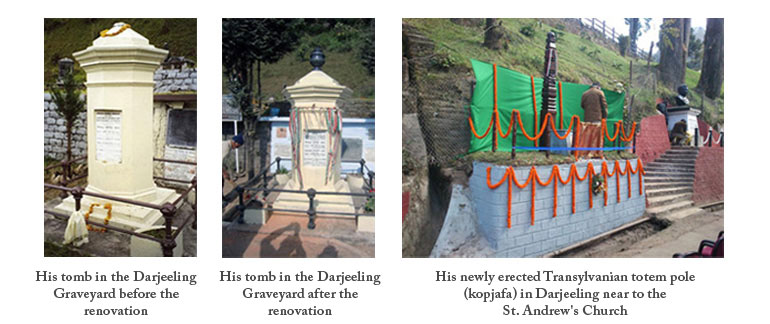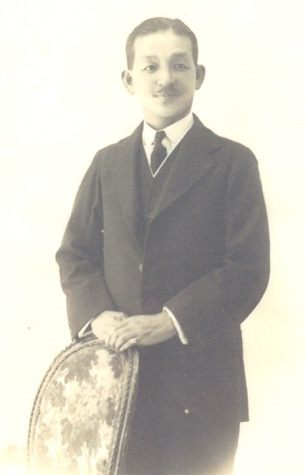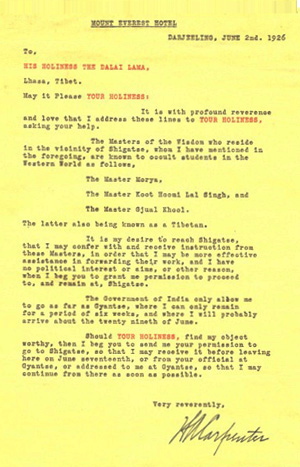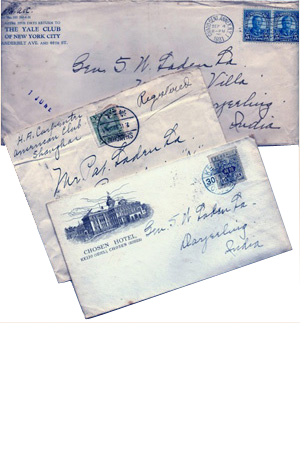Alexander Csoma de Kőrös (Kőrösi Csoma Sándor)
(b. Kőrös, April 4, 1784 – d. Darjeeling, April 11, 1842)
Researcher of ancient homeland of Hungarian, orientalist, linguist, founder of Tibetology.

Alexander Csoma de Kőrös
(Kőrösi Csoma Sándor)
He was born in Kőrös (Csomakőrös), a small village in Transylvania, as son of an improvised Siculo-Hungarian noble family. His father served as a border guard. At the age of 15, he was sent to the famous Bethlen College. As his family could not support him, he earned the money for his studies and modest living as servant student. His favourite subjects were history, geography and foreign languages. It was Ádám Herepei, his professor in Nagyenyed, who called his attention to questions of the origin of Hungarians. With the help of Reformed Church, he studied between 1815-1818 in the University of Göttingen, Germany. His German professors, Eichhorn, Heeren and Blumencach has great influence on him. In Göttingen, he got acquainted with Persian, Arabic and Turkish languages. He decided to search for the ancient homeland of Hungarians, supposed to be in Central Asia, in Dzungaria.
He arrived in India in 1822. The first scene of his research was Ladakh, that time an independent Himalayan kingdom. He started his studies in Tibetology with the financial support of William Moorcroft, representative of the British-Indian Government, with the aim of preparing a Tibetan-English dictionary and grammar. With the permission of the authorities of Ladakh, he went to the monastery of Zangla, where he started to learn Tibetan language, and got acquainted with Buddhism with the help of the learned Tibetan lama, Sangye Phunchog. Later he continued his studies in the monasteries of Phuktal and Kanam. He lived under difficult circumstances. His main meal was the Tibetan tsampa, tea mixed with barley flour and flavored with yak butter. He spent the last ten years of his life with research work in Calcutta, in the headquarters of the Asiatic Society of Bengal. His scientific papers were published in the journal of the Asiatic Society of Bengal. His works comprised classical Tibetan literature, different schools of Buddhism, history, natural sciences and Tibetan medicine. His study Tibetországnak földleirása tibeti kútforrások szerint (Geographical Description of Tibet according to Tibetan Sources) is especially interesting from geographical point of view. His two life achievements, Tibetan-English Dictionary and the Tibetan Grammar were published in Calcutta in 1834. By the end of his life he knew 16 European, Asian and classical languages. While crossing the Terai region in Bengal, he got malaria and the tropical fever ended his life in Darjeeling. Alexander Csoma de Kőrös is considered to be the founder of oriental studies in Hungary, who influenced greatly he scholars if later generations. He became a symbol of Indo-Hungarian friendship.
Major works: Essay towards a Dictionary Tibetian and English (Calcutta, 1834); A Grammar of the Tibetan Language in English (Calcutta, 1834); Kőrösi Csoma Sándor dolgozatai. Collected by Tivader Duka. (Bp., 1885).

Lit.: Tivadar Duka: Life and works of Alexander Csoma de Kőrös (London, 1884); Baktay Ervin: Kőrösi Csoma Sándor (Bp., 1962); Hirendra Nath Mukerjee: The Great Tibetologist Alexander Csoma de Kőrös (New Delhi , 1984); Trilok Deep: Alexander Csoma de Kőrös (in Hindi) (New Delhi, 1984); Hermit – Hero from Hungary Alexander Csoma de Kőrös the Great Tibetologist (New Delhi, 1981); Alexander Csoma de Kőrös (1784-1842) Pioneer of Oriental Studies in Hungary. Ed. By S.K. Vij, Imre Lázár (New Delhi, 1992); Dr. János Kubassek: Hungarian Hermit of the Himalaya. The Life of Sándor Kőrösi Csoma (Bp. 1999); P.J. Marczell: Alexander Csoma de Kőrös (Kolkata, 2007).



